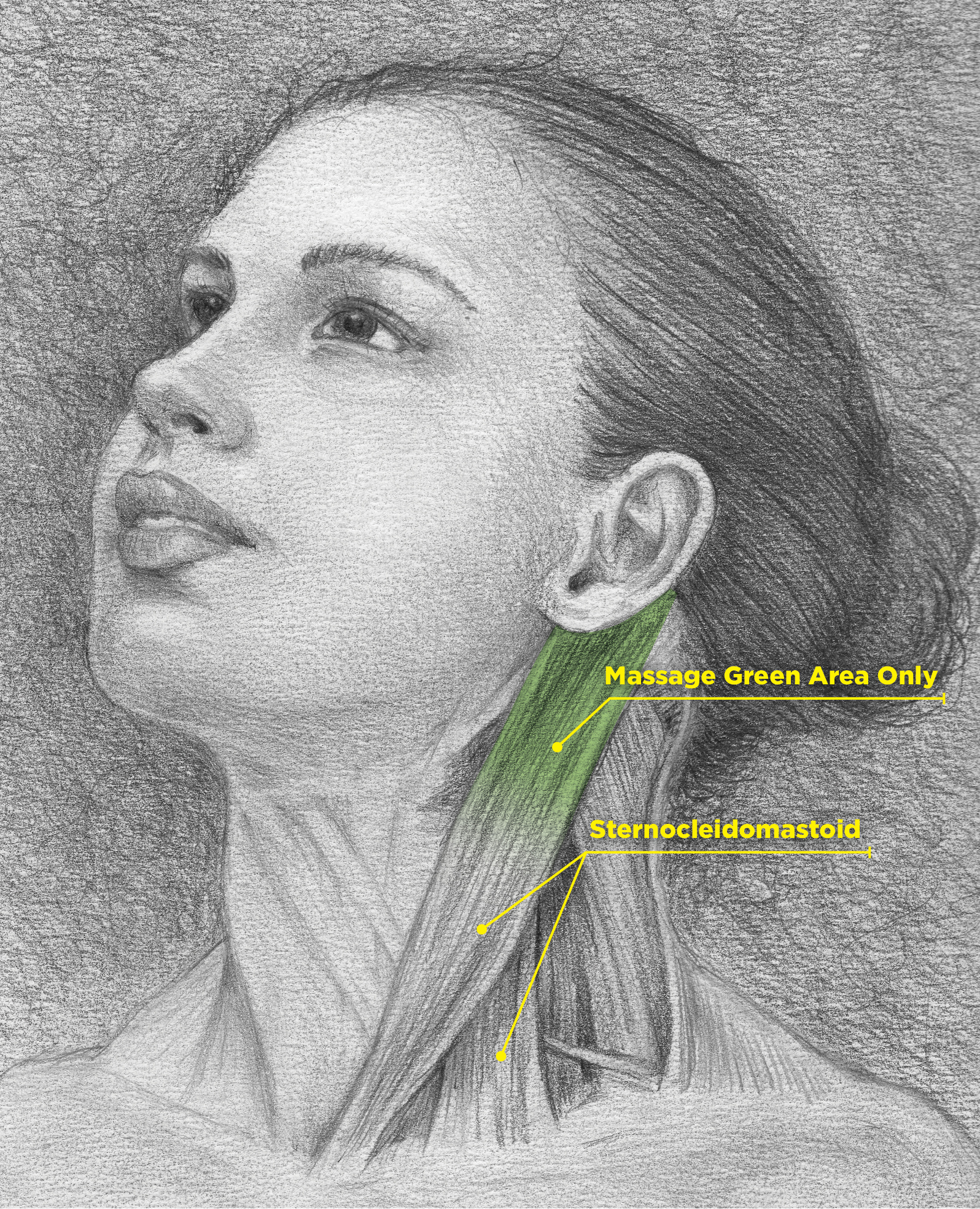Miserable Muscle Number One; the Sternocleidomastoid. Part Two
Headaches and Tight Sternocleidomastoids Go Together
The best time to come to the physical therapy clinic to be treated for a headache is when you have a headache. However, since people cannot manufacture a headache on the spot, I always offer my headache clients the option to call for an immediate appointment if they are having a headache. We can generally bring the pain down dramatically in the half-hour appointment time.
One young lady called the office with a headache she rated at 8-9/10 intensity. She came in that day. She could turn her head to the left 70 degrees on her first visit. 70 degrees neck turning is limited but not terribly so. Generally, I like to see people able to turn their heads at least 80 degrees unless they have had a neck operation or some other condition that limits their neck motion.
On this day, my client arrived with a severe headache, and could only turn her head 50 degrees to the left. She could not turn her neck further to the left because the right sternocleidomastoid muscle was preventing it. The neck motion had been lost with the onset of her headache, without her realizing it. She then used her left hand to massage her tight right sternocleidomastoid which was stopping her neck from turning left. As her neck turned more freely to the left, her headache subsided to a dull ache that she rated at 1-2/10 as her neck turned more freely to the left.
I find many people who initially get their headache better are not careful to keep their necks loose. As the neck slowly stiffens, they open themselves to another headache attack. It does require frequent attention to make sure your neck is able to freely turn. However, the reward for your attention may be an ability for you to stave off the worst of your headaches.
Sternocleidomastoid muscles can increase your jaw problem
A tight sternocleidomastoid muscle can contribute to jaw joint problems. You may have heard of the temporomandibular joint(TMJ). You cannot open your jaw fully because your temporomandibular joint is stuck. However, I find that many of the people whose jaws are stuck often have tight sternocleidomastoid muscles, usually on the side of the worst jaw pain. Press on the sternocleidomastoid muscle to gain a few more millimeters of opening.
You may have jaw pain when you bite down on your food. Bite down at the same time you press the sternocleidomastoid muscle. You can now chew easier and less painfully as long as you press the sternocleidomastoid. Remove the pressure, and the chewing pain returns.
Methods to Massage the Sternocleidomastoid
Most people use their left hand to reach the right sternocleidomastoid muscle. However, some people have difficulty getting the arm across the chest. Others find their hand strength limits their ability to massage the sternocleidomastoid. Try this other method if the arm crossover technique feels awkward to you. Use your right hand to massage the right sternocleidomastoid muscle in this case.
- Sit next to your kitchen table, with your right elbow propped on the table, and put a pillow underneath your arm if the table is too low.
- Turn your neck slightly to the left, with the chin tucked down.
- Press your right knuckles or thumb on the side of your neck to work your tight right sternocleidomastoid muscle. Make sure you work the part of the muscle up towards your ear. You should feel tenderness in the sternocleidomastoid muscle but no sharp pains! Many people prefer this method and find they reach their sternocleidomastoid muscle easier this way.
-You understand that if not done properly, some techniques and exercises described in this blog could harm you. Any activities you perform are at your own risk, and you expressly agree to waive any claims against the author for any harm that may arise from your own actions. By reading this blog and conducting these exercises, you accept this risk. This blog provides content related to physical and/or mental health issues. As such, your use of techniques described acts as your acceptance of this disclaimer. Consult Chapter 2 in my book, “Calming the Headache Storm” to make sure the headache is not the sign of a more serious problem. The techniques, advice and strategies contained in this blog may not be suitable for every individual and should be abandoned if your headache increases. Seek the advice of your physician.
